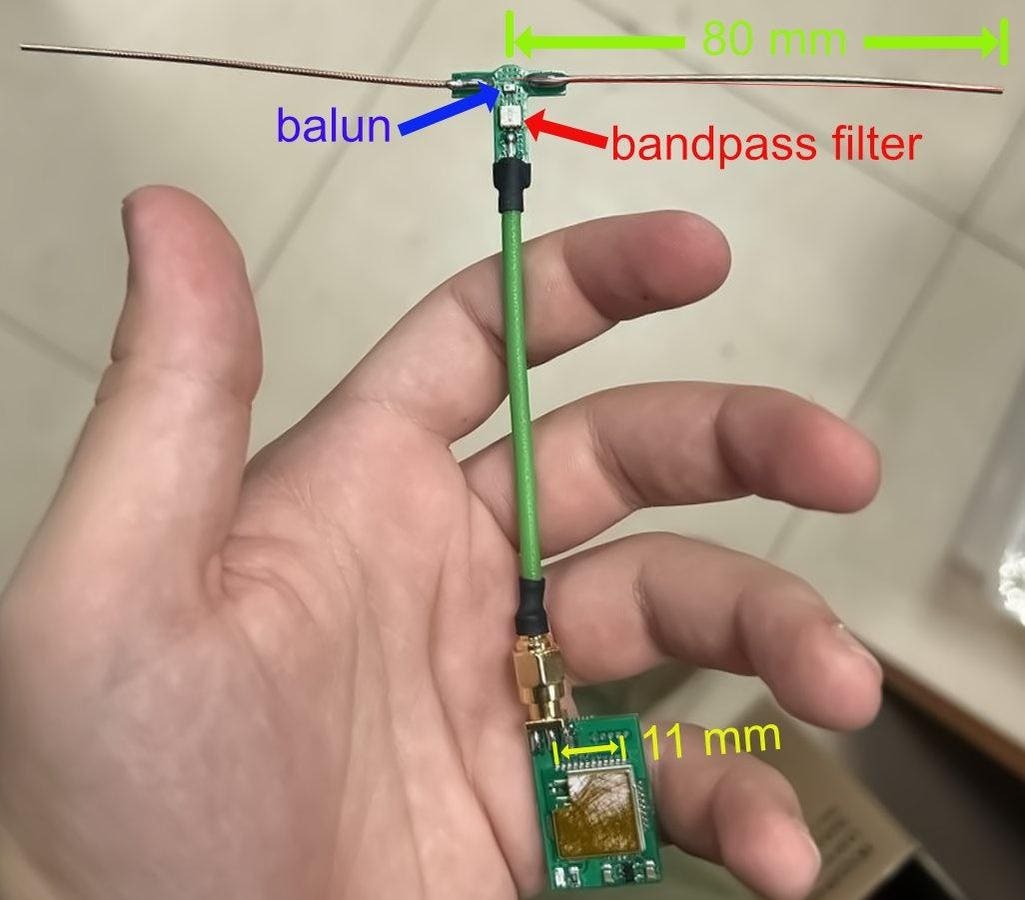FPV drones are a signature weapon of the Ukraine conflict, and jammers to stop them are a matter of life and death. Both sides have fielded jammers and drone guns firing a beam of radio waves to knock out drone communications, said to take out thousands of drones a month. Now a Russian group claims to have developed a ‘magic radio’ for FPVs which is highly resistant to jamming. A physicist with the handle DanielR evaluated the device minutely in a detailed Twitter thread.
“From a technological perspective there is nothing surprising here,” DanielR told Forbes. But the device does make efficient use of cheap, off-the-shelf components.
Racing quadcopters converted into cheap kamikaze drones are used by both sides. They are capable of diving into foxholes and bunkers, chasing down trucks, and even destroying main battle tanks from five or more miles away. Often jamming is the only protection, but this device claims to nullify it.
Off-The-Shelf Electronic Warfare
The first thing DanielR notes is that while Russian Telegram channels hail the Hermes Anti-interference Communication Kit as an all-Russian creation, it is made with imported parts.
“The Russians removed the labels from the most important piece, but they need not have bothered,” he notes.
The item is still easily identifiable as a RAK3172(H) wireless module made by Chinese company RAKwireless, which DanielR calls “an easy-to-use, small-size, low-power solution for long-range wireless data applications,” available in different radio frequency bands online for $5.99.
This is a device for LoRa, short for Long Range, a radio communication technology designed for low-power wide area networks by electronics giant Semtech in 2014. LoRa has become a standard building block for Internet of Things applications and the hardware is widely mass-produced. This makes it attractive for FPV builders, especially given its flexibility.
“The LoRa radios have always been able to operate on different frequencies and this ability has been used throughout the war,” says DanielR.
LoRa uses little power and can communicate at up to three miles in urban areas and five miles or more in the open. Many drone operators now use a repeater, carried on another drone, to extend the reach.
DanielR notes that Hermes’ “magic antenna with filter” looks like a half-wave dipole antenna. Because the size of antenna corresponds to the radio waves it picks up, he estimates that it operates on a frequency of about 930 Mhz. The antenna is fitted with a balun (short for “balancing unit”) and a surface acoustic wave filter, both of which improve performance. DanielR says these too are commodity items costing about $.50 and $0.40 respectively.
The device has a 3D printed plastic case and is likely operated with an STM32 microcontroller, a standard component in electronic devices made by a company based in Switzerland, with an LED display.
Hermes charge around $140 for a transmitter unit equipped with their technology, which DanielR says should allow for a healthy profit margin. Russian companies are notorious for labelling imported devices as “Russian-made” and charging over the odds, like the infamous rebranded Chinese quadcopters sold as made in Russia at a markup of around 200%.
Cheap But Effective
DanielR says that the technology appears sound. Like the FPV drones themselves, it shows how off-the-shelf consumer technology now works even in a military environment.
“It seems the military experts were not paying attention to just how good these systems became,” DanielR told Forbes. “We are seeing the effects of extremely powerful technologies being made available to everyone.”
The open-source nature of the equipment used shows what Russia can do even without supposedly military-grade hardware.
“The Russian use of cheap electronics illustrates that controlling the export of chips and other sensitive electronics to Russia, while important, can only ever have a finite effect,” electronic warfare expert Thomas Withington told Forbes. “Russian ingenuity can come up with solutions to outflank export controls.”
Electronic warfare is a cat-and-mouse game in which each move is met with a counter move as one side attempts to jam communications while the other attempts to sidestep the jamming. Any advantage tend to be temporary; at the start of 2023 it seemed that Russian jammers were winning, until Ukrainian technology neutralized the advantage. The pendulum is likely to keep swinging.
“The best way to help the Ukrainians neutralize Russian drones, is to get the Ukrainians as much electronic warfare materiel, particularly electronic attack systems, as they need,” says Withington. “Electronic warfare represents a robust, and comparatively lower cost, capability which can help blunt Russia’s land power. This is one reason why the current deadlock in the EU and the US is so unhelpful.”
For the meantime, FPV drones on both sides appear to be highly effective even in the face of jammers, presumably thanks to units like the Hermes one. As David Axe notes, a whole sub-genre of FPV videos shows drones taking out vehicles equipped with jammer units. Sooner or later the jammers will raise their game again, and DanielR says they might aim to attacking the drones’ video signal.
“Video is completely independent of the radio control,” he told Forbes. “There’s no encryption and channels are limited. It was meant for hobbyists and is very susceptible to electronic counter measures. Video is always hard to do.”
The number of FPVs is rising fast. Russian group Sudoplatov alone claims to produce a thousand of them a day. Control of the electronic spectrum, to be able to jam the enemy’s drones and ensure that yours cannot be jammed, is a vital battleground, with the winner able to destroy the enemy at will without being destroyed.
Read the full article here





